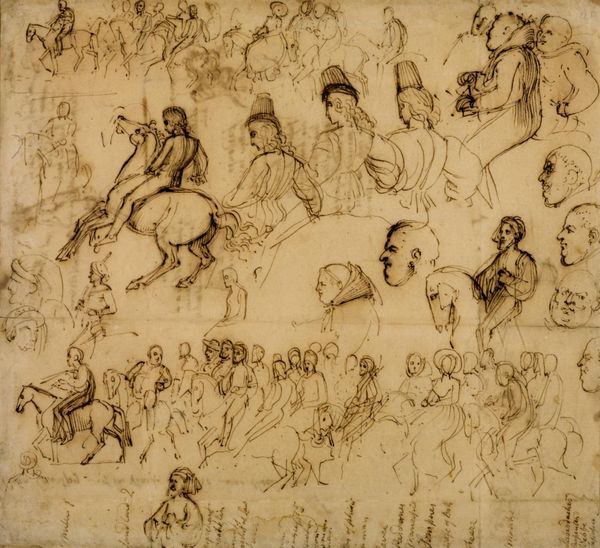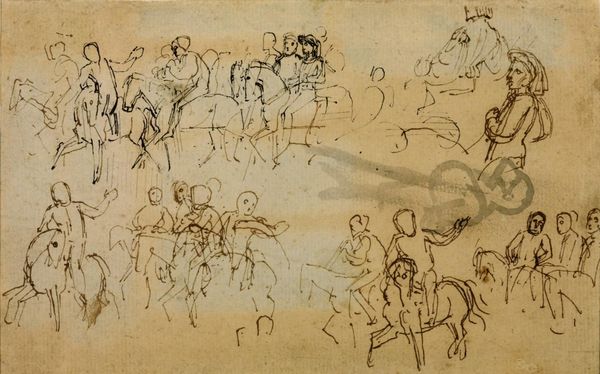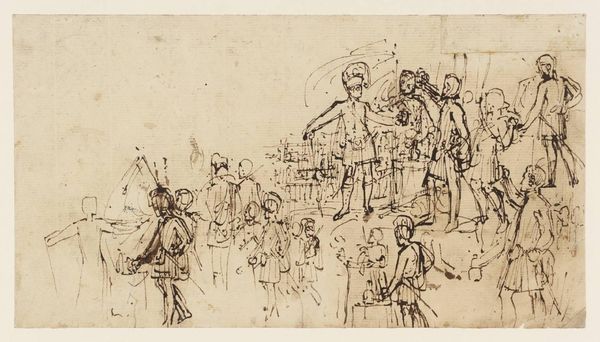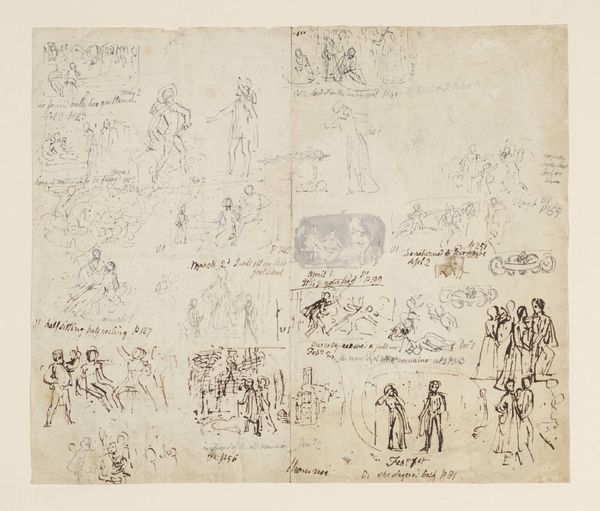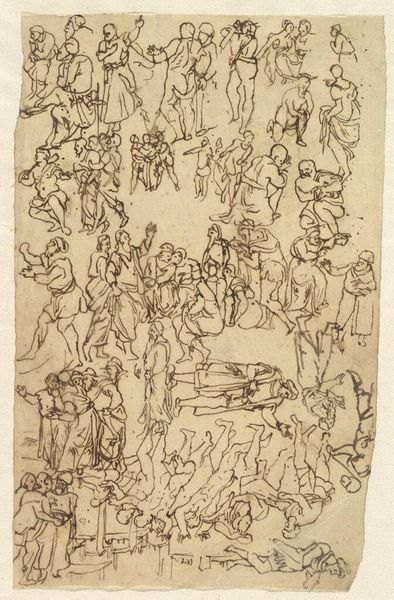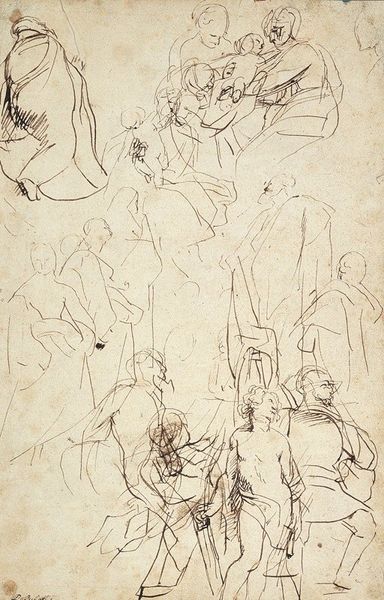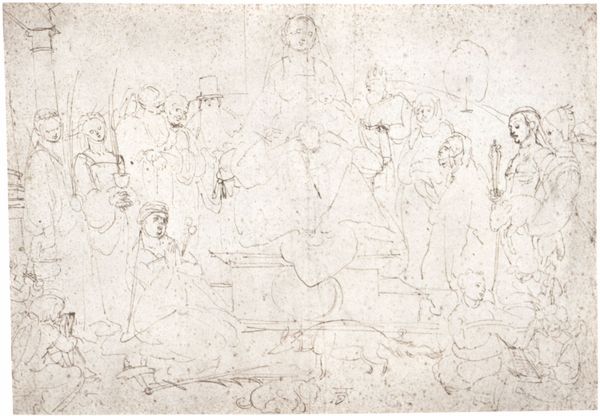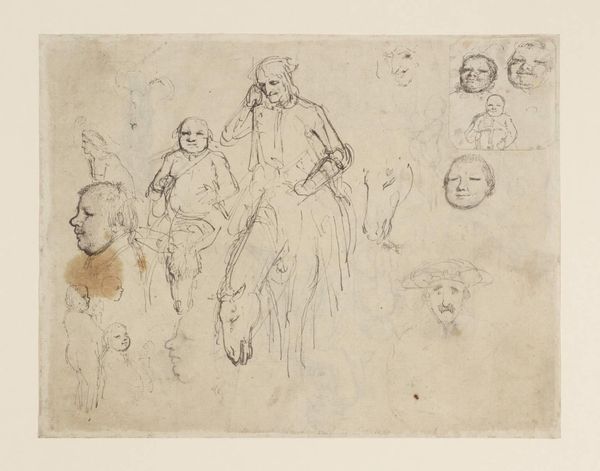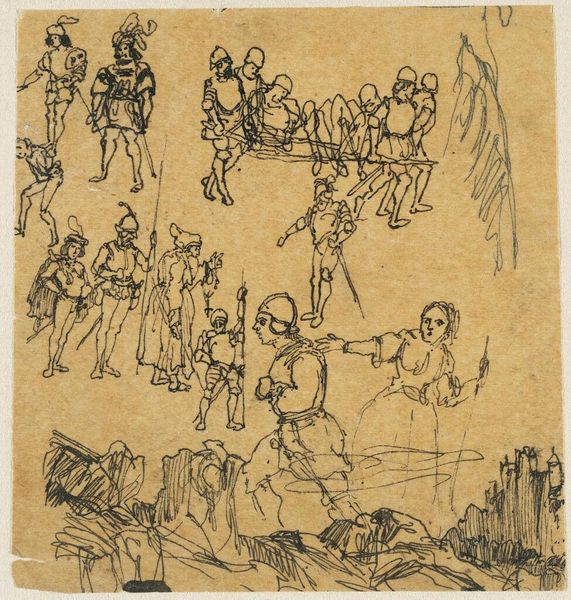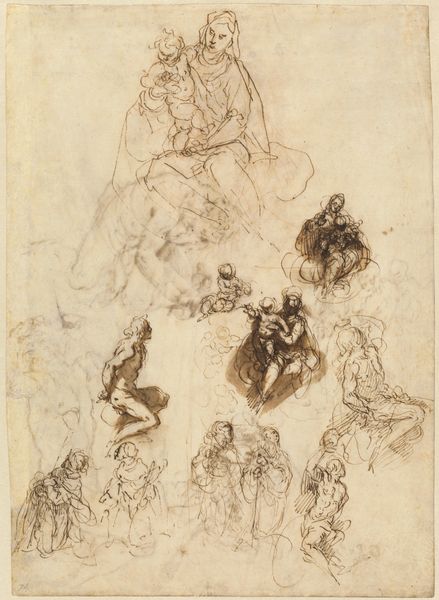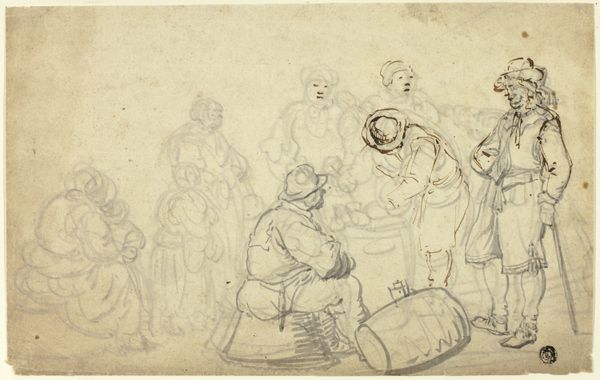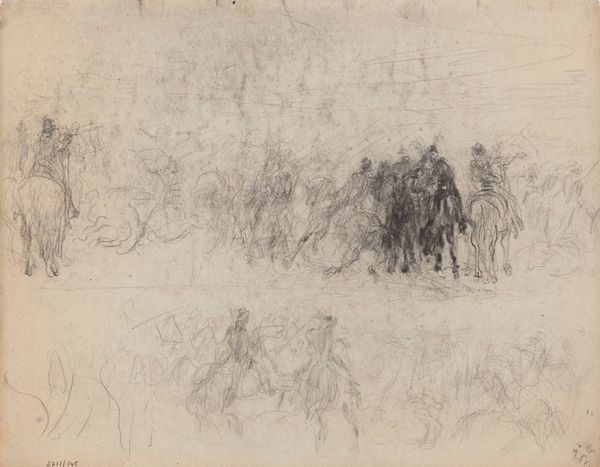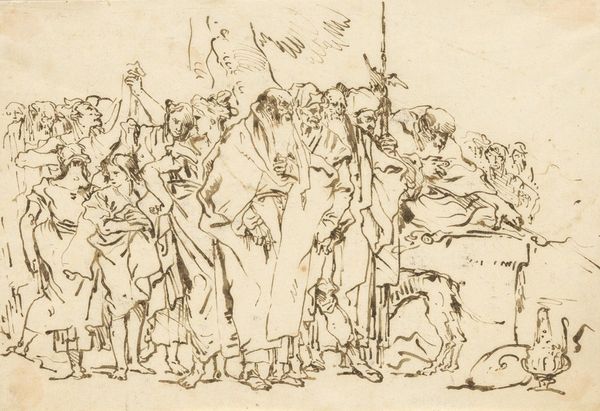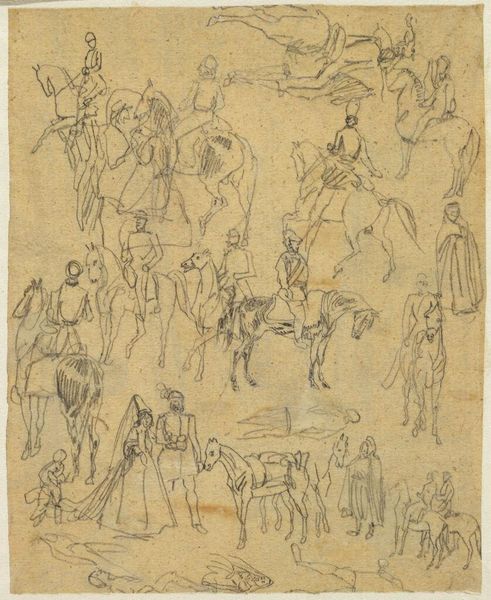
Sketch for ‘The Pilgrimage to Canterbury’, with a compositional sketch, a key to the figures, and studies of heads and figures 1806 - 1807
0:00
0:00
Dimensions: support: 114 x 190 mm
Copyright: CC-BY-NC-ND 4.0 DEED, Photo: Tate
Editor: Here we have Thomas Stothard's "Sketch for ‘The Pilgrimage to Canterbury’" from around the late 18th or early 19th century, a pen and ink drawing at the Tate. It feels very academic and historical, like a glimpse into a past social structure. What can you tell me about its cultural context? Curator: Stothard’s sketch offers us insight into the social dynamics represented in Chaucer's "Canterbury Tales" but also into the socio-political lens through which the late 18th century viewed the medieval period. How do you think Stothard's representation engages with, or perhaps even idealizes, the concept of pilgrimage and community? Editor: I hadn't thought of it that way, but now I see how the sketch can be understood as reflecting both historical narrative and the artist's contemporary values! Curator: Exactly! It's a visual dialogue between past and present, isn’t it?
Comments
tate 8 months ago
⋮
http://www.tate.org.uk/art/artworks/stothard-sketch-for-the-pilgrimage-to-canterbury-with-a-compositional-sketch-a-key-to-the-a00877
Join the conversation
Join millions of artists and users on Artera today and experience the ultimate creative platform.
tate 8 months ago
⋮
Stothard chose to break up his long composition of the Canterbury Pilgrims into five groups. Each is dominated by a prominent figure in Chaucer’s text: the Host, the Squire, Chaucer, the Wife of Bath, and the Cook. In these sketches Stothard tries out studies for the Squire, and also experiments with the whole composition and the key to the characters. Gallery label, August 2004
